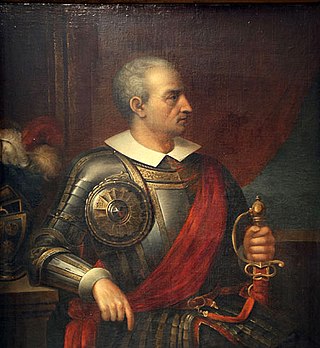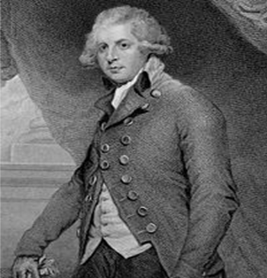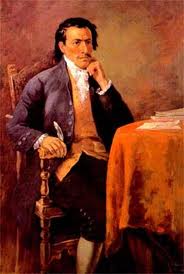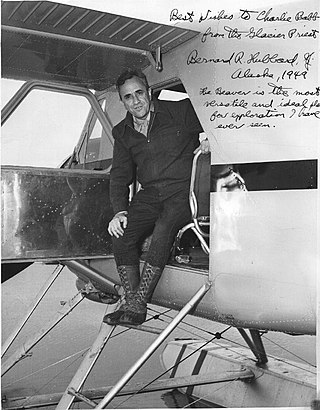Related Research Articles

Diego de Almagro, also known as El Adelantado and El Viejo, was a Spanish conquistador known for his exploits in western South America. He participated with Francisco Pizarro in the Spanish conquest of Peru. While subduing the Inca Empire he laid the foundation for Quito and Trujillo as Spanish cities in present-day Ecuador and Peru respectively. From Peru, Almagro led the first Spanish military expedition to central Chile. Back in Peru, a longstanding conflict with Pizarro over the control of the former Inca capital of Cuzco erupted into a civil war between the two bands of conquistadores. In the battle of Las Salinas in 1538, Almagro was defeated by the Pizarro brothers and months later he was executed.
The History of Ecuador extends over an 8,000-year period. During this time, a variety of cultures and territories influenced what has become the Republic of Ecuador. The history can be divided into six eras: Pre-Columbian, the Conquest, the Colonial Period, the War of Independence, Gran Colombia and Simón Bolívar, and the final separation of his vision into what is known today as the Republic of Ecuador.

The Society of Jesus, commonly known as the Jesuits, is a religious order of clerics regular of pontifical right for men in the Catholic Church headquartered in Rome. It was founded in 1540 by Ignatius of Loyola and six companions, with the approval of Pope Paul III. The society is engaged in evangelization and apostolic ministry in 112 nations. Jesuits work in education, research, and cultural pursuits. Jesuits also conduct retreats, minister in hospitals and parishes, sponsor direct social and humanitarian ministries, and promote ecumenical dialogue.

José Vicente Ferrer de Otero y Cintrón was a Puerto Rican actor and director of stage, film and television. He was one of the most celebrated and esteemed Hispanic American actors—or, indeed, actors of any ethnicity—during his lifetime, and after, with a career spanning nearly 60 years between 1935 and 1992. He achieved prominence for his portrayal of Cyrano de Bergerac in the play of the same name, which earned him the inaugural Tony Award for Best Actor in a Play in 1947. He reprised the role in a 1950 film version and won an Academy Award for Best Actor, making him the first Hispanic actor and the first Puerto Rican-born to win an Academy Award.

Jacques Marquette, S.J., sometimes known as Père Marquette or James Marquette, was a French Jesuit missionary who founded Michigan's first European settlement, Sault Sainte Marie, and later founded Saint Ignace. In 1673, Marquette, with Louis Jolliet, an explorer born near Quebec City, was the first European to explore and map the northern portion of the Mississippi River Valley.

The Viceroyalty of Peru officially known as the Kingdom of Peru was a Spanish imperial provincial administrative district, created in 1542, that originally contained modern-day Peru and most of the Spanish Empire in South America, governed from the capital of Lima. Peru was one of the two Spanish Viceroyalties in the Americas from the sixteenth to the eighteenth centuries.
Sebastián de Belalcázar was a Spanish conquistador. De Belalcázar, also written as de Benalcázar, is known as the founder of important early colonial cities in the northwestern part of South America; Quito in 1534 and Cali, Pasto and Popayán in 1537. De Belalcázar led expeditions in present-day Ecuador and Colombia and died of natural causes after being sentenced to death in Cartagena, at the Caribbean coast in 1551.

Charles Marie de La Condamine was a French explorer, geographer, and mathematician. He spent ten years in territory which is now Ecuador, measuring the length of a degree of latitude at the equator and preparing the first map of the Amazon region based on astro-geodetic observations. Furthermore he was a contributor to the Encyclopédie.

Atahualpa, also Atawallpa (Quechua), Atabalica, Atahuallpa, Atabalipa, was the last effective Inca Emperor before his capture and execution during the Spanish conquest.

Gonzalo Pizarro y Alonso was a Spanish conquistador and younger paternal half-brother of Francisco Pizarro, the conqueror of the Inca Empire. Bastard son of Captain Gonzalo Pizarro y Rodríguez de Aguilar (senior) (1446–1522) who as colonel of infantry served in the Italian campaigns under Gonzalo Fernández de Córdoba, and in Navarre, with some distinction, and María Alonso, from Trujillo. He was the half brother of Francisco and Hernándo Pizarro and the full brother of Juan Pizarro.

Appletons' Cyclopædia of American Biography is a six-volume collection of biographies of notable people involved in the history of the New World. Published between 1887 and 1889, its unsigned articles were widely accepted as authoritative for several decades. Later the encyclopedia became notorious for including dozens of biographies of people who had never existed. In nearly all articles about the Cyclopædia various authors have erroneously spelled the title as 'Appleton's Cyclopædia of American Biography', placing the apostrophe in the wrong place.

Richard Cantillon was an Irish-French economist and author of Essai Sur La Nature Du Commerce En Général, a book considered by William Stanley Jevons to be the "cradle of political economy". Although little information exists on Cantillon's life, it is known that he became a successful banker and merchant at an early age. His success was largely derived from the political and business connections he made through his family and through an early employer, James Brydges. During the late 1710s and early 1720s, Cantillon speculated in, and later helped fund, John Law's Mississippi Company, from which he acquired great wealth. However, his success came at a cost to his debtors, who pursued him with lawsuits, criminal charges, and even murder plots until his death in 1734.

Dom Pedro Mascarenhas was a Portuguese explorer and colonial administrator. He was the first European to discover the island of Diego Garcia in the Indian Ocean in 1512. He also encountered the Indian Ocean island of Mauritius in 1512, although he may not have been the first Portuguese explorer to do so; earlier expeditions by Diogo Dias and Afonso de Albuquerque along with Diogo Fernandes Pereira may have encountered the islands. In 1528 explorer Diogo Rodrigues named the islands of Réunion, Mauritius, and Rodrigues the Mascarene Islands, after the name of Mascarenhas.

Francisco Javier Eugenio de Santa Cruz y Espejo was a medical pioneer, writer and lawyer of mestizo origin in colonial Ecuador. Although he was a notable scientist and writer, he stands out as a polemicist who inspired the separatist movement in Quito. He is regarded as one of the most important figures in colonial Ecuador. He was Quito's first journalist and hygienist.

Pedro Vicente Maldonado y Flores was an Ecuadorian scientist who collaborated with the members of the French Geodesic Mission. As well as a physicist and a mathematician, Maldonado was an astronomer, topographer, and geographer.
Samuel Fritz SJ was a Czech Jesuit missionary, noted for his exploration of the Amazon River and its basin. He spent most of his life preaching to Indigenous communities in the western Amazon region, including the Omaguas, the Yurimaguas, the Aisuare, the Ibanomas, and the Ticunas. In 1707 he produced the first accurate map of the Amazon River, establishing as its source the Marañón.

Vicente Ferrer Moncho was a Jesuit missionary who spent his life working to improve the lives of the poor in the mission he founded in Southern India. Today the Vicente Ferrer Foundation carries out humanitarian projects in Andhra Pradesh, bringing aid to over 2.5 million poor people.

The history of the missions of the Jesuits in China is part of the history of relations between China and the Western world. The missionary efforts and other work of the Society of Jesus, or Jesuits, between the 16th and 17th century played a significant role in continuing the transmission of knowledge, science, and culture between China and the West, and influenced Christian culture in Chinese society today.

Bernard Rosecrans Hubbard was an American geologist and explorer who popularized the Alaskan wilderness in American media during the middle of the 20th century. Known as "the Glacier Priest", he was a Jesuit priest, head of the Department of Geology at the University of Santa Clara, California, and for a time was the highest-paid lecturer in the world, leading 31 expeditions into Alaska and the Arctic.

The Church and Convent of San Ignacio de Loyola de la Compañía de Jesús de Quito, also known in the Ecuadorian people simply as La Compañía, is a Catholic clerical complex located on the corner formed by calles García Moreno and Sucre, in the Historic Center of the city of Quito, capital of Ecuador. The façade of its main temple is entirely carved in volcanic stone. Over time, this church has also been called: "Temple of Solomon of South America". Father Bernardo Recio, a traveling Jesuit, called it "Golden Ember".
References
- ↑ Cantillon, Joseph (1938). "Some Phantom Jesuits". Woodstock Letters. LXVII: 163–205. Retrieved 24 March 2020.
- ↑ Cantillon (1938), p. 167
- ↑ Cantillon (1938), p. 167